Moon Monday #133: India signs the Artemis Accords; NASA prepares for future crewed lunar exploration; Chandrayaan 3 update, and more
From Chandrayaan 1 to the Artemis Accords, India and US aim for the Moon
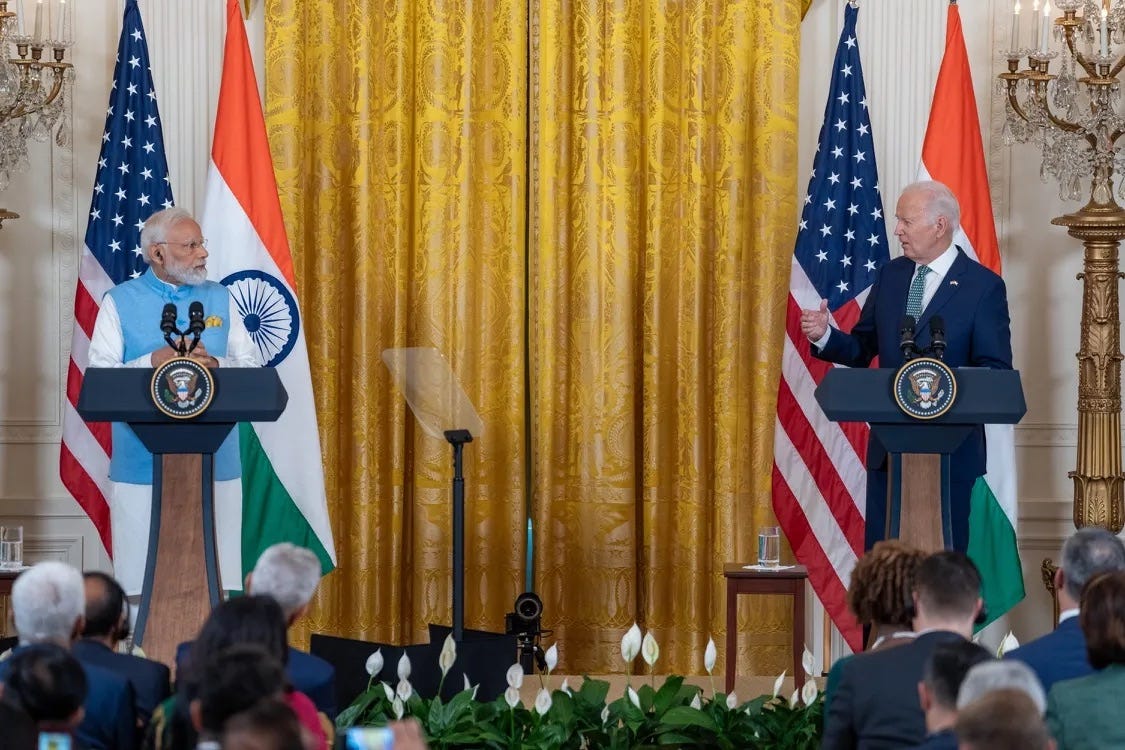
As part of an unprecedented set of broad-sweeping agreements between the US and India centered around collaborative science & technology advancements, India signed the Artemis Accords on June 21. India is the 27th country—but more notably one of the few with independent and frequent access to space—to join in shaping this US-led lunar governance framework aiming to peacefully manage the increasing number of Moon missions from around the globe.
What started as a close collaboration on India’s Chandrayaan 1 lunar orbiter—which discovered water on the Moon and catalyzed the worldwide lunar return including that of crew with the US Artemis program—has now peaked policy-wise with India’s historic signing of the Accords. As it happens, it was only last week that I highlighted many major considerations for India to join the Accords so you can refer the same for many points which still stand. But I’ll resurface some specifics below, which have become much more relevant now, and expand on them considering the new and exciting lunar avenues now open for India and the US.
India’s Gateway to the Moon
The Accords could fast-track India’s human spaceflight capabilities and ambitions. While India has already been working towards being the world’s fourth nation to indigenously send humans to space with the ambitious Gaganyaan mission mid-decade, it simply has no near-future plans, technical means, or the budget to send humans to the Moon.
However, ISRO Chief S. Somanath said in a March 2023 interview that the agency is considering possibly contributing to the Gateway, an upcoming NASA-led international lunar orbital station for Artemis astronauts. And so similar to how NASA is providing crew seats to Japan, Europe, and Canada in return for their respective Gateway contributions, India might work its way towards one too. Being an Accords signee will certainly be of aid here. This possibility isn’t to be dismissed as a moonshot because the factsheet of the new India-US agreements signals both the wide scope and the immediacy of intended human spaceflight prospects:
NASA will provide advanced training to ISRO astronauts with the goal of launching a joint effort to the International Space Station in 2024. Additionally, NASA and the ISRO are developing a strategic framework for human spaceflight cooperation by the end of 2023.
Aiding crewed Artemis missions from orbit and surface

The Artemis Accords could finally help catalyze a tight NASA-ISRO collaboration with India’s Chandrayaan 2 lunar orbiter providing advanced orbital data to help plan upcoming robotic & crewed Artemis missions. It’s been an untapped opportunity, especially as US scientists have formally urged NASA to replace the gracefully aging, 2009-launched Lunar Reconnaissance Orbiter (LRO), and therein have recognized the abilities of the Chandrayaan 2 orbiter.
In fact, at the 54th Lunar and Planetary Science Conference this year, Wes Patterson of the LRO team, working with ISRO SAC scientists, described how they’re using complementary radar data from LRO and the Chandrayaan 2 orbiter to uniquely characterize the Artemis III candidate landing sites. This included getting valuable information on landing hazards within those sites, better access to their permanently shadowed regions than optical imagers, and gaining a broad sense of the physical states of the regions from inferred physical properties.
For India, such a collaboration at scale would mean the country’s budding planetary science community gets infused with a wealth of LRO-derived operational and scientific knowledge. Perhaps more importantly, it would lend India via the Accords a seat on the table for prospecting resources on the Moon so as to ultimately help shape the governance of their extraction as and when it becomes a reality.
Also of note here is the Indo-Japanese LUPEX Moon rover mission, which is targeted for launch in the 2026–2028 timeframe to study the nature, abundance, and accessibility of water ice on the Moon’s south pole. The mission is similar yet complementary to NASA’s VIPER rover, and will now most certainly feed into the critical data on which future crewed Artemis missions will bank on—seeing that both Japan and India are signatories of the Accords now. The Japanese government has already approved the LUPEX mission but India is yet to, and so that will be the green light to look out for this year.
But what about the Moon Treaty?
The next big question is if India will ratify the 1979 Moon Treaty, which has strict and even highly idealistic non-sovereignty underpinnings that fundamentally do not gel well with the Accords.
The US has explicitly formally stated it doesn’t support The Moon Treaty. The Accords might—but doesn’t yet—put its signatories in objection of the 1967 Outer Space Treaty, particularly by controversially setting potentially dangerous long-term precedence for local resource extraction, ownership, and therefore de facto governance on the Moon. That the Accords is non-binding and currently lacks a formal mechanism to resolve disputes arising from lunar activities only furthers the concerns.
The thing is India’s new space policy, out in April, has similar language and ambitions for extracting, using, and selling space resources to what four signatories of the Accords—the US, Japan, Luxembourg, and UAE—have passed as national bills. India joining the Accords will thus likely accelerate the morphing of the country’s space policy into a national bill, at which point India might need to take a firm stance with regards to the Moon Treaty.
As a signee, India might need to either withdraw from the Moon Treaty just like Saudi Arabia did or ratify it and join Australia, who is both a member of the Accords and the Moon Treaty. Considering the growing Indo-Australian space partnership, and India and Australia’s presence in the Quad countries alongside the US and Japan, India and/or Australia could possibly lead forming an international lunar regime via the Treaty under UN COPUOS to ensure multilateral agreements on lunar governance rather than simply rely on bilaterally mounted consensus via the Accords.
The noted hurdle
US export controls continue to be a chokepoint even for traditional US allies when partnering on science and technology projects, including space. For example, NASA’s Office of Inspector General elaborated in a January report how export control laws are affecting and delaying international cooperation on Artemis and the Gateway. This is why it’s notable that the June 22 US-India Joint Statement from the White House mentions the issue:
Welcoming India’s Space Policy – 2023, the leaders [President Biden and Prime Minister Modi] called for enhanced commercial collaboration between the U.S. and Indian private sectors in the entire value chain of the space economy and to address export controls and facilitate technology transfer.
[…]
The leaders welcomed the launch of the interagency-led Strategic Trade Dialogue in June2023 and directed both sides to undertake regular efforts to address export controls, explore ways of enhancing high technology commerce, and facilitate technology transfer between the two countries.
The Indian government’s press release on signing the Accords similarly says:
The [Artemis Accords] pact will also pave the way for easing restrictions on import of critical technologies in the space domain especially electronics, benefitting Indian companies to develop systems and innovate for US markets. It will also facilitate participation of India in more scientific programmes jointly, allow access to common standards for long term engagements in activities including human Spaceflight programmes and stronger engagements with the US in more strategic areas including micro-electronics, quantum, space security etc.
ISRO’s budget isn’t enough
All of the said collaborative space potential will not brew if India doesn’t scale up its space budget dramatically, as Aditya Ramanathan notes. ISRO’s aspiring upcoming space science missions have been facing nothing but delays due to budget shortages and overshadowing priorities. While India’s new space policy does explicitly encourage ISRO to undertake “missions on in-situ resource utilization, celestial prospecting and other aspects of extra-terrestrial habitability”, failure to increase such science and technology outputs for real wouldn’t allow India to sufficiently leverage the Accords for helping shape our future at the Moon.
Many thanks to Epsilon3 for sponsoring this week’s Moon Monday.
Chandrayaan 3 launch nears at last
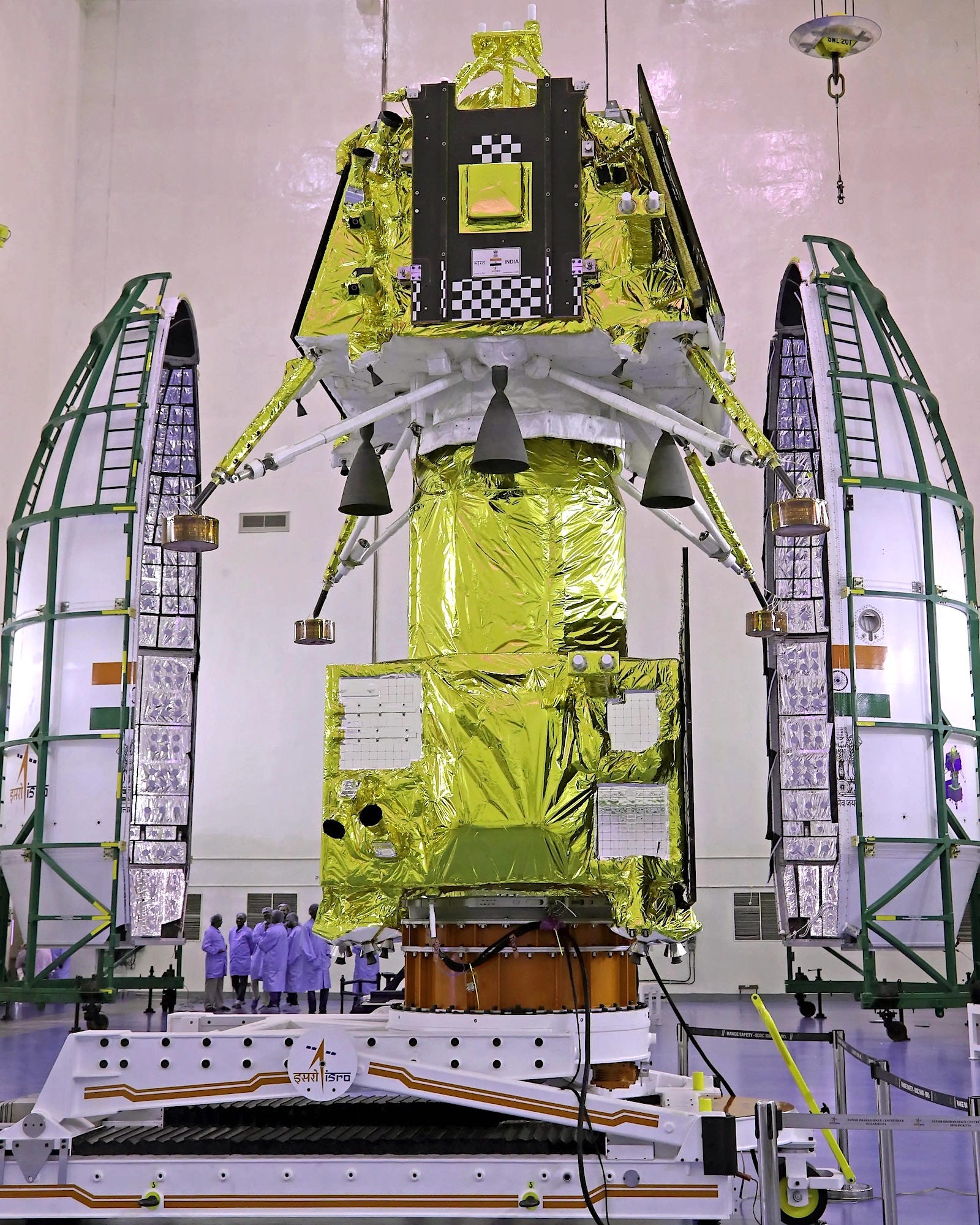
The success of ISRO’s Chandrayaan 3 Moon lander, launching mid-July, will be critical to the survival of India’s planetary science program, and for anchoring India’s long-term role in lunar governance via the Accords. Speaking of the mission, here are its latest tidbits:
- ISRO has now integrated the lander into its rocket fairing, and will mate it atop the rest of the fully assembled GSLV Mk III rocket by early July to target a mid-July launch.
- The Hindu notes that ISRO is retaining the original names of the Chandrayaan 2 lander and rover for their Chandrayaan 3 equivalents: the Vikram lander and Pragyan rover.
- ISRO has put up a gallery webpage with some neat new photos of the Mooncraft.✨
NASA progressing on new RS-25 engines for crewed Artemis Moon missions
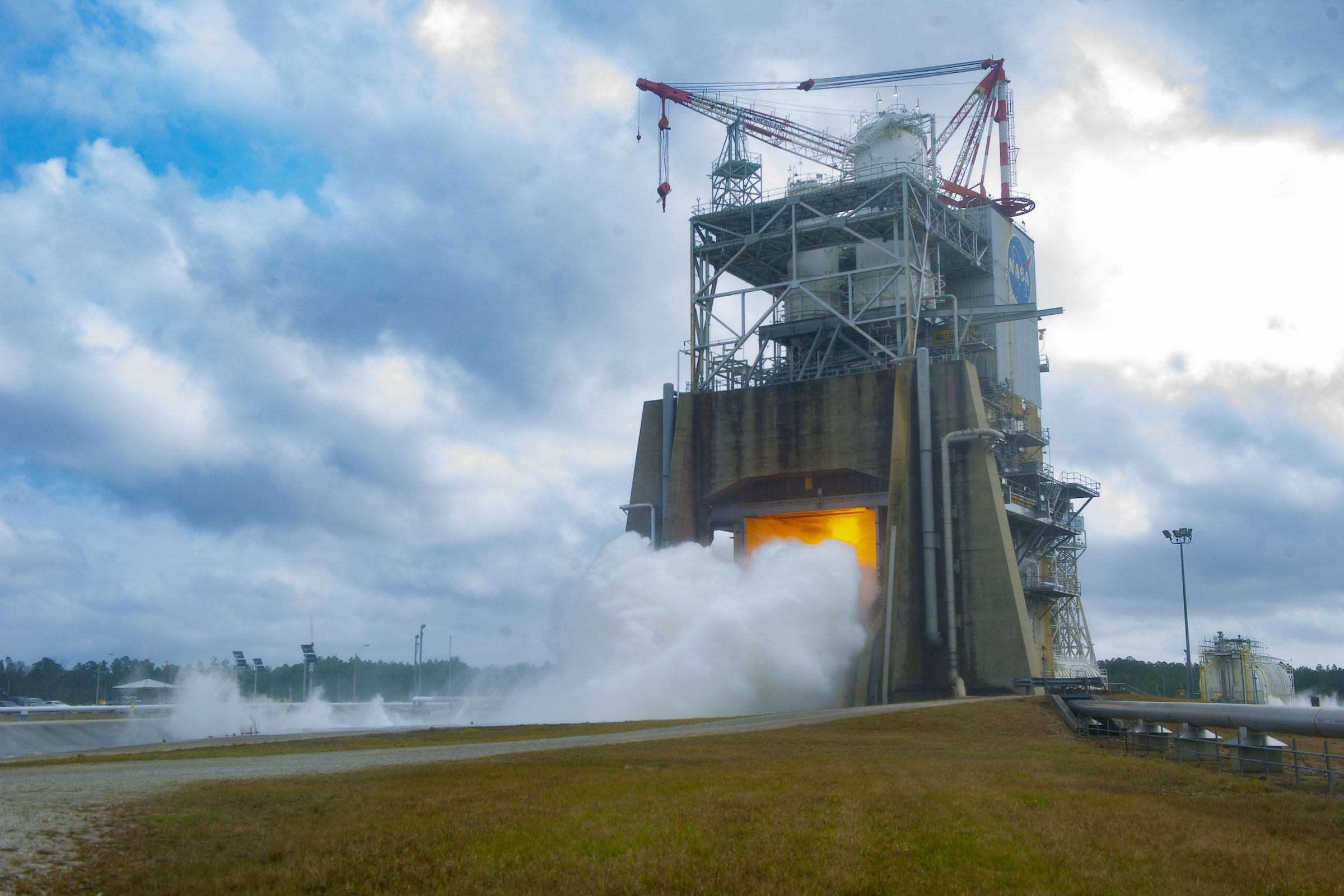
On June 22, NASA completed the first certification test series of the fully redesigned RS-25 engine to be used on future SLS rocket Moon flights starting with Artemis V. The tests included eight 500-second firings of an RS-25 engine—the same amount of time as required during an SLS mission—and four longer burns for ensuring margins. During one of those longer burns, engineers and operators also tested flight-like gimbaling of the engine, which during a mission helps stabilize the rocket as well as keep it on its intended trajectory. NASA is now preparing to begin the final test series this Northern fall, after the success of which new RS-25 engines can be produced for Artemis V and beyond.
NASA aims to have new RS-25s be built with advanced manufacturing techniques with an aim to reduce cost by over 30% from the current $100 million. But in a scathing May 25 report, NASA’s Office of Inspector General pointed out that this figure excludes project management and overhead costs.
Exploring accessible lunar water deposits
NASA LRO continues to help us narrow down the feasible resource prospecting areas in the hell of constraints that is the Moon’s south pole. By combining ten datasets from eight instruments, the LRO team has highlighted several regions that should host water ice with high confidence while being accessible by future missions to know and act on the ground truth.
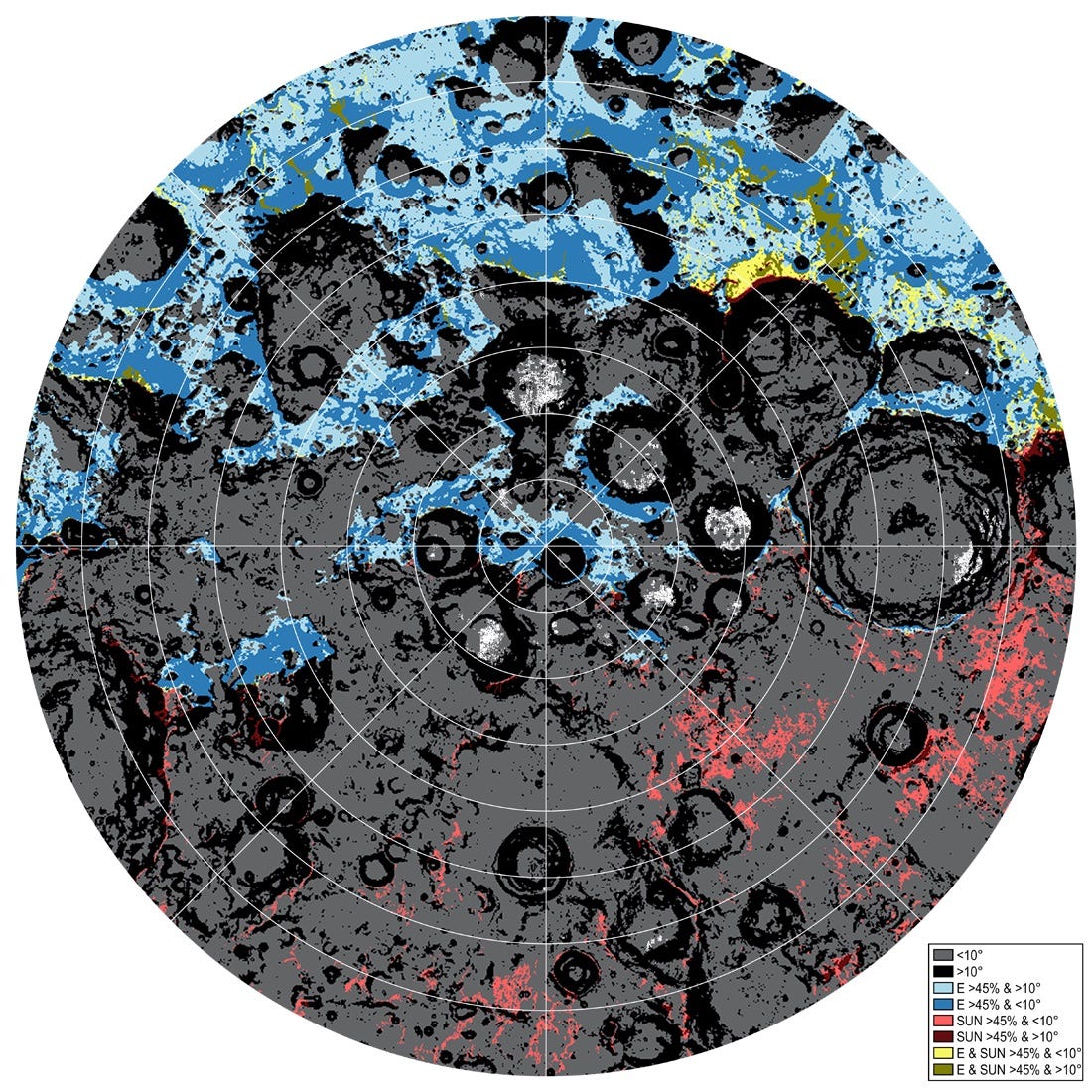
Going forward, it would take the ongoing, more precise measurements from NASA’s ultra-sensitive ShadowCam instrument onboard South Korea’s KPLO orbiter coupled with deeper underground radar measurements from India’s Chandrayaan 2 orbiter to identify the best, precise locations of water ice lunar deposits for future missions.
More Moon
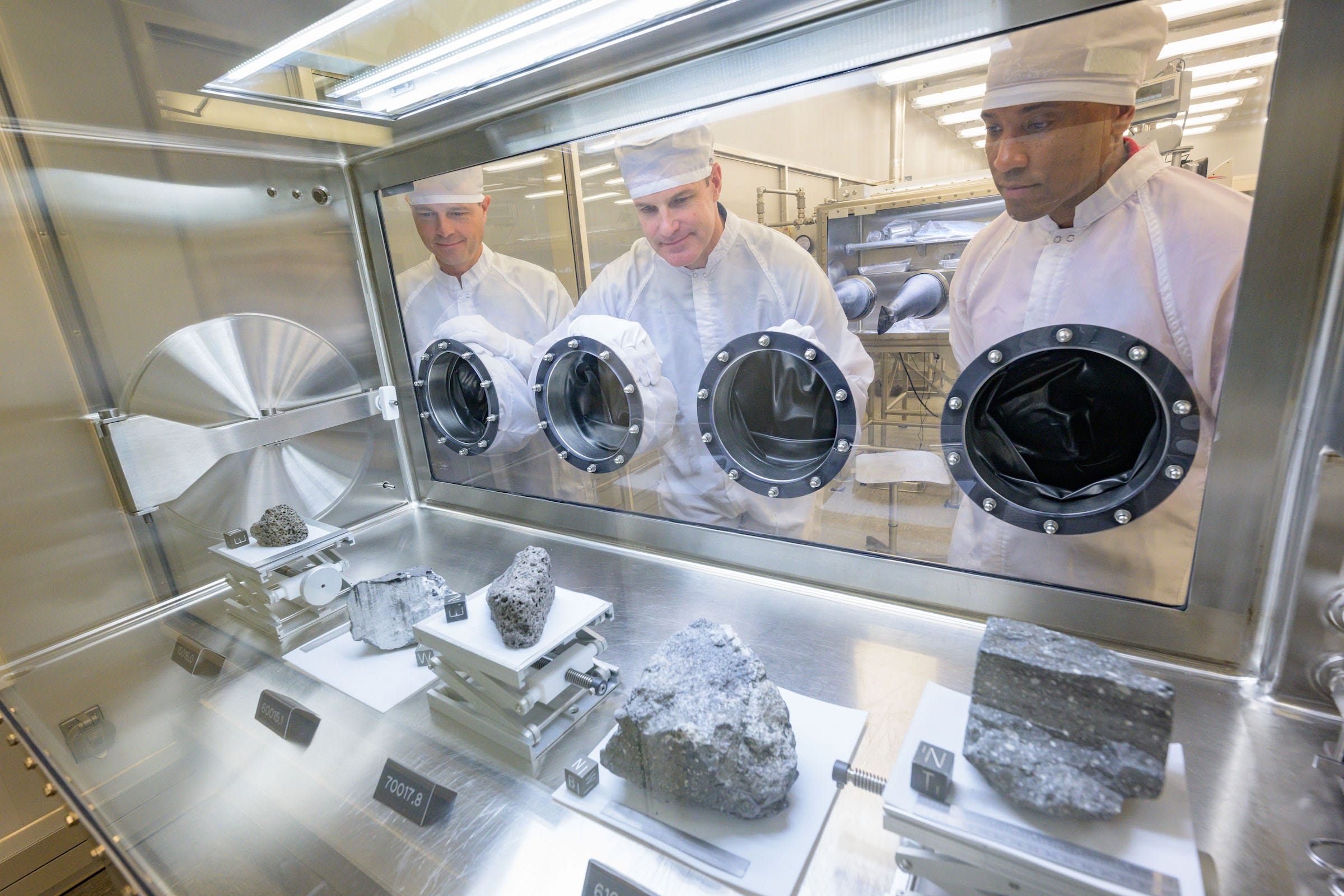
- On June 21, Ecuador became the 26th country and the fourth in Latin America to sign the Artemis Accords. The other Latin American signatories are Brazil, Colombia, and Mexico. Jeff Foust notes that this move comes in the context of some members of the Accords wanting to onboard non-traditional space nations.
- The US-based International Lunar Observatory Association and the National Astronomical Observatories of China are hiring for a post doctorate to publish results based on data from the Chang’e 3 lander’s ultraviolet telescope and also make the instrument’s data more accessible to the global scientific community.
- If you’re attending the European Lunar Symposium this week, do tune in to my virtual talk on “Sustaining lunar exploration through worldwide public support” on Day 3, June 29. For those not attending the conference, I’ll put up the recorded talk for public viewing after getting due permission. I look forward to learning a lot from the international symposium, which will discuss the breadth and depth of the science and technology of upcoming exploration of our Moon. 🌗

